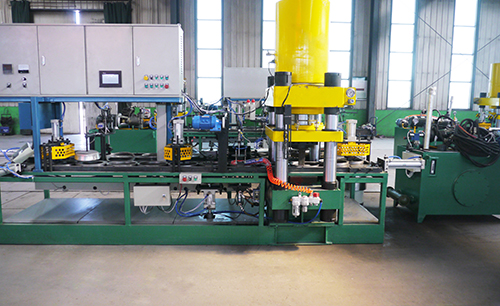Current location:9 inch steel cutting disc >>Text
9 inch steel cutting disc
disc for cutting stone2181People have read
IntroductionAluminum Oxide vs. Zirconia Flap Discs An In-Depth Comparison In the world of abrasive materials, fl...

Aluminum Oxide vs. Zirconia Flap Discs An In-Depth Comparison In the world of abrasive materials, flap discs have become a staple for various grinding and finishing applications. Among the most popular materials used for these discs are aluminum oxide and zirconia. Each type offers unique properties, advantages, and disadvantages, making them suitable for different tasks. This article aims to provide an in-depth comparison of aluminum oxide and zirconia flap discs, helping users select the best option for their specific needs. Composition and Structure Aluminum oxide flap discs are made from a combination of aluminum oxide grains, a cost-effective and versatile abrasive material. This type of disc is generally bonded onto a flexible backing, which allows for a degree of flexibility in use. Zirconia flap discs, on the other hand, utilize zirconia alumina as the abrasive material. Zirconia grains are tougher and more durable, and they are commonly used in applications that require more aggressive material removal. Abrasive Performance When it comes to abrasive performance, zirconia flap discs have a clear advantage over aluminum oxide discs. Zirconia is known for its superior toughness and longevity, making it an ideal choice for heavy grinding tasks. Users often favor zirconia discs for applications on hard metals, such as stainless steel and high-carbon steels, where higher removal rates and longer life are needed. Aluminum oxide discs, while effective for lighter applications such as finishing and surface preparation, tend to wear out more quickly under aggressive grinding conditions. Heat Resistance Another significant factor to consider is heat resistance. Zirconia discs manage heat better than aluminum oxide discs. During grinding, friction generates heat, which can degrade the abrasive grain and negatively impact performance. Zirconia's tough grit design enables it to withstand higher temperatures, thus preserving its effectiveness over longer periods of use. Aluminum oxide discs, being less resistant to heat, may lose their cutting capabilities faster when used in prolonged or intensive applications. aluminum oxide vs zirconia flap disc Cost Efficiency Cost is always a consideration in any manufacturing or repair operation. Generally, aluminum oxide flap discs are more affordable than zirconia discs, making them a popular choice for budget-conscious buyers. They provide adequate performance for general-purpose tasks without necessitating a significant investment. However, in high-demand environments where durability and performance are paramount, the higher initial cost of zirconia discs can be justified by their longevity and efficiency, ultimately resulting in lower operational costs over time. Application Suitability When determining the right flap disc for a specific task, understanding the application is crucial. Aluminum oxide flap discs work well for tasks such as paint or rust removal, surface preparation, and light grinding on softer metals and wood. They are particularly suitable for DIY or occasional use where performance does not need to withstand heavy wear. Conversely, zirconia flap discs excel in industrial settings or professional environments where materials are tough and time is of the essence. Their ability to handle aggressive grinding on stainless steel, cast iron, and other hard-to-grind materials makes them the go-to option for heavy machinery maintenance and metal fabrication industries. Conclusion In summary, both aluminum oxide and zirconia flap discs have their unique strengths and weaknesses. Aluminum oxide discs are cost-effective and suitable for lighter applications, while zirconia discs offer superior durability and performance for heavier tasks. Ultimately, the choice between the two materials should be guided by the specific requirements of the job, including the type of material being worked on, required abrasiveness, and budget constraints. By understanding the differences and applications of each type of flap disc, users can make informed decisions that enhance their efficiency and productivity in various grinding tasks.
Tags:
Latest articles
Effective Methods for Removing Paint from Aluminum Wheels and Rims
9 inch steel cutting discHow to Remove Paint from Aluminum Rims Aluminum rims are a popular choice for many vehicle owners du...
Read More
Enhance Your Lawn Mower Blade Sharpening Techniques with Flap Discs for Optimal Performance
9 inch steel cutting discSharpening a Lawn Mower Blade with a Flap Disc A Step-by-Step Guide Maintaining a well-kept lawn is...
Read More
Clean Removal Alumina 180mm Abrasive Flap Disc Wheel
9 inch steel cutting discUnderstanding the difference between cutting and grinding discs is essential for anyone involved in...
Read More
Popular articles
- grinder disc for cutting aluminium
- grinding wheel nomenclature pdf
- cutting discs 4 1_2 for versatile metalworking applications
- Understanding Rust Stripping Techniques for Efficient Wheel Design and Performance Optimization
- aluminium oxide flap wheel
- Flap Discs for Sanding and Polishing Various Surfaces Efficiently and Effectively
Latest articles
-
t27 vs t29 flap disc
-
Effective Methods for Stripping Paint from Alloy Wheels Quickly and Safely
-
High-Performance Cutting Discs for Stainless Steel Fabrication and Processing
-
Elmas Taşlama Diskleri İçin Kesim Yüzeyinin Kalitesini Artırmanın Yolları
-
Shaft Flap Wheel Design for Enhanced Performance and Efficiency in Manufacturing Applications
-
Metallschneidscheibe 4.5